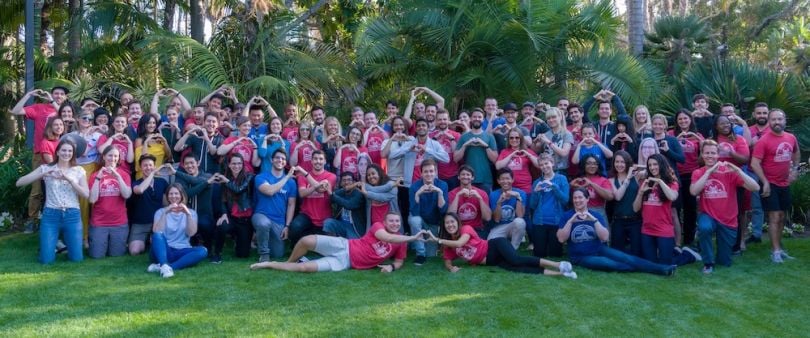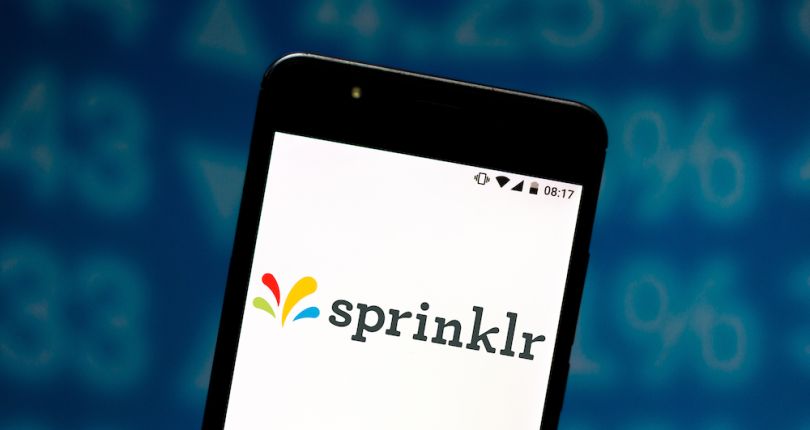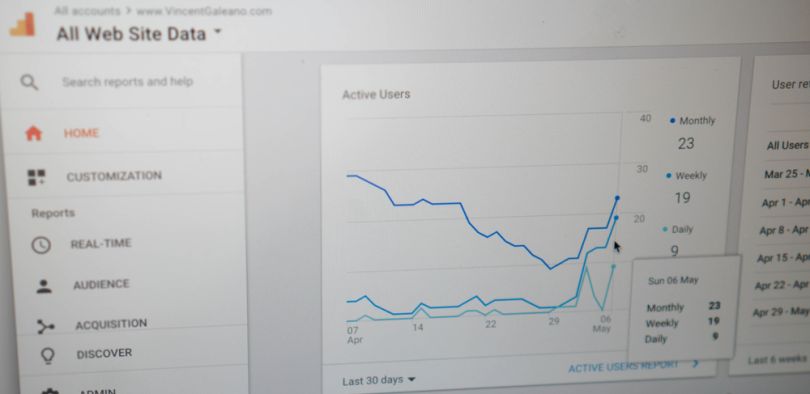
Content’s a funny thing. Writers often chafe at the word for its almost Orwellian lack of descriptiveness. Add a hashtag, and #content doubles as an ironic acknowledgment of the online impulse toward eternal passive consumption. Infinite scrolls calls for infinite output.
With all that demand, it can feel like no one grasps the paramount importance of crafting thoughtful content that genuinely resonates — be it a blog post, a research roundup, the perfect viral video or some other piece of produced work — quite like those who create and amplify it do.
Unlike traditional advertising, content marketers bring brands to consumers’ attention not with invasive ads, but by entertaining and educating them. For San Francisco-based Tanaz Ahmed, currently of HackerRank, that has entailed being both creator and strategist. In addition to blog-writing, podcasts, research projects, customer interviews, she has also had a hand in social media, SEO and plenty else throughout her career.
“Content marketers set strategies; it’s not just writing whatever comes to mind,” Ahmed said. “It’s usually part of broader campaigns. People sometimes aren’t aware that’s part of our role, and such a big part.”
Another Bay Area-based content marketer, Amisha Gandhi, focuses on B2B as the vice president of influencer marketing and communications at SAP.
“I've had different types of roles throughout my career, but they’re always centered around content and storytelling,” she said.
Given the scope of their work, content marketers require a deep toolkit to do the job. Here’s an overview of some marketing technology that Ahmed and Gandhi have used at various points throughout their careers, and the tech companies helping them make it happen.

Social Marketing and Email Marketing
Social Marketing and Email Marketing
Content marketing isn’t exactly synonymous with social media marketing or email marketing, but the three tend to be related. We may think of social as the future and email as the past, but many — if not most — digital campaigns still incorporate both, and content marketers need to be duly conversant. Here are a few of their frequently relied upon platforms.

Buffer
Location: San Francisco
Many companies, especially digital ones, have a dedicated social media manager. But even in those cases, they often work closely with the content marketing side.
“We often touch social, writing copy for specific campaigns that we’re running,” Ahmed said, citing Buffer, which remains the go-to social media post-scheduling tool for many who work in social. Aside from scheduling, it’s also handy for analytics, offering a quick-view picture of clicks, mentions, potential and other metrics. Content marketers also use Buffer to A/B test different headline and image strategies.

Sprinklr
Location: NYC
Another social management tool that’s made waves in content marketing circles and beyond is former billion-dollar unicorn startup Sprinklr. “You can schedule your social, but it also allows you to respond to users, and look at a lot of different analytics,” Gandhi said. Sprinklr’s most notable aspect is its use of robust AI, which identifies what people are saying about companies’ brands across more than two dozen social channels and millions of web sources.
In announcing a new smart response capability, for instance, the company notes AI’s ability to distinguish the difference between a Red Bull customer’s use of “sick” in describing their product experience (good!) versus a healthcare company client’s use of the same word (not good!).

Marketo
Location: San Mateo, Calif.
In the social era, email marketing has been declared dead more times than Kenny from South Park, but it can still be extremely effective. As Inc. points out, people are still more likely to have an email address than any type of social media account. And unlike so much social, inboxes aren’t subject to vagaries of the all-commanding algorithm. Marketo has a suite of CRM applications, among them an industry-popular email marketing tool. It lets content marketers segment contacts in order to avoid one-size-fits-all blasts, avoid getting sent to spam, draft tailored automated follow-ups based on recipients’ habits, build retargeting opportunities and more.
“It’s quite good for marketing campaigns,” Gandhi said. “When I was with the mobile product marketing team, we used it to adjust campaigns in real time to really achieve the right flow. Those kinds of things were very valuable.”

Web Marketing
Digital content campaigns frequently rely on a number of practices, including SEO writing, creating blog posts, building a microsite, conducting surveys for research, building out guides as PDFs. The chosen mediums all depend on the brand, the audience and, of course, what’s meant to be communicated. HackerRank’s deep-dive research reports are perfect for its skills-focused developer community, but that might not be the best avenue for, say, White Claw Hard Seltzer. Even though there’s no single universal fit, some web marketing options — and their corresponding preferred applications — have proven reliable over the years.

Ahrefs
Location: Singapore
Even in the brave new world of influencer targeting and experiential marketing, the SEO-friendly written word remains a staple. Organic search still carries real weight. It’s way more effective than pay-for-click, and the overhead is far lower than, say, multimedia production or renting space to stage elaborate conferences. Ahrefs has been around for nearly 10 years, a long time as search goes. But it remains a preferred tool for folks like Sonia Easaw, a Bay Area content marketer for air purifier manufacturers Molekule. Easaw told Built In she uses the index for keyword and backlink research — steps one and two when it comes to pinpointing and making use of high-ranking topics.

Confluence by Atlassian
Location: Sydney, Australia
Beyond SEO, content marketers tend to be “the in-house writer, for just about everything,” Ahmed said. “We’re writing or editing any sort of content that's put out, whether it be an update to a website description of a video... Content marketers are often brought in to advise, do some edits, and help tighten things up. In general, they are very much jack-of-all-trades kind of writers.”
That means plenty of time spent with word processors. Google Docs is most popular, but Ahmed has also used Atlassian’s Confluence. Like Docs, it’s collaborative; users can let others comment and edit. But Confluence fans value its “discoverability,” integrating as it does with Atlassian’s project management boards so even those who haven’t been looped in directly can see when a new doc is created.

SurveyMonkey
Location: San Mateo, Calif.
It’s common knowledge that simple content farms nowadays make for poor crop yields. SEO-versed content marketers know that Google smiles benevolently upon content that incorporates original data, research and analysis. So do readers. To that end, Ahmed points to SurveyMonkey, a survey-conducting platform that’s popular with content marketing pros who recognize that value. That said, readers are also increasingly savvy when it comes to methodology, which means content marketers must be hyper-aware that their survey sample is both large and representative. That’s where SurveyMonkey’s sample size calculator and probability sampling tool come in handy. Content marketers appreciate a well-designed survey because it also doubles as market research, often revealing insights that bring a greater understanding of what kind of content resonates with an audience.

SEMrush
Location: Boston
This widely used digital marketing tool centralizes metrics for SEO audits, pay-per-clicks, site traffic, social performance and lead generation, all in what Gandhi describes as a user-friendly interface. “It presents the important analytics information in a way that’s easily digestible and understandable,” she said. You can also drop in a competitor’s URL for a glimpse into how their product listings, ads and keyword rankings are performing. “You can easily analyze both organic Google and any paid web search results,” Gandhi said. “That allows you to evaluate your own sites, but also perform competitor analysis.

Influencer Identification
Last year, a Dublin hotel went semi-viral when it announced a full ban on social media influencers, after one YouTuber asked for a free five-night stay. And this year, a Los Angeles ice cream truck caused a similar online frenzy when it posted this policy update: “influencers pay double.” Aside from displaying an ironic marketing savvy, the moves speak to a larger backlash against influencers — or, more correctly, the vision of influencers as over-filtered, under-working purveyors of #sponsored #lifestyle posts.
But that’s a narrow read. An influencer is really any authority who commands sway in their industry. And marketers can leverage that pull in myriad ways beyond merely paying for Instagram posts. Here are a couple of highlights from the small ecosystem of influencer marketing tools have emerged in recent years.

Traacker
Location: San Francisco
Gandhi prefers this influencer ID platform, in part because it goes beyond mere identification. Traacker also provides granular-detail performance metrics and an intuitive way to actually communicate with influencers once you’ve spotted them. “It looks like you’re doing your email,” Gandhi said.
“And it’s really useful for tracking engagement. Not just social, but all the different campaigns that we do.”
It’s a good fit for B2B and B2C companies alike, and it works well for teams that share like-minded influencers, as SAP does, Gandhi said.
Similar popular platforms include Kred and BuzzSumo.

SYLO
Location: NYC
Whenever a brand-new revenue channel sprouts into the world, you can be sure scammers aren’t far behind, ready to take advantage. Sure enough, influencer marketing fraud is both real and costly. Fake or artificially popular accounts will cost brands $1.3 billion by year’s end, according to cybersecurity company Cheq. Gandhi points to Sylo as a standout because it incorporates a verification system.
“They’re trying to create an industry certification standard of, this person is actually really an influencer,” Gandhi said. “Because there are a lot of fake followers and bots and things like that. That's really important, especially on the B2C side.”
This month, Sylo held in New York City the Influencer Fraudnomics Summit, a one-day conference in which marketers, influencers and others gathered to address influencer-fraud-related threats like brand reputation, data privacy and transparency.

Google
Location: Mountain View, Calif.
Don’t sleep on this little-known startup and its convenient search tool. Kidding aside, it’s important to mention independent search by way of underscoring the fact that no single platform will eliminate the research legwork necessary to identify key players in your market.
“Even though we have Traackr, we also regularly look at Google to see where people are speaking and things like that,” Gandhi said. “We do a lot of our own research. You have to. You can’t just rely on a tool.”

Project and Team Management & Content Audit
As mentioned, content marketers are by nature of the role a multi-disciplinary bunch. And any job that necessitates so much cross-departmental collaboration calls for intuitive team project management and team communication platforms. Here are some of the industry-favored options — plus one bonus pick for content audit, on which marketers have a varying degree of ownership, depending on their organization.

Slack
Location: San Francisco, Calif.
The near-ubiquitous messaging platform is all but de rigueur in industries ranging from IT to journalism to management consulting — and content marketing is no different. Slack, as you likely know, lets users send direct messages or post to private and public channels. SAP is one of the thousands of computer software companies that regularly use the tool to stay connected, according to Enlyft. Microsoft Teams — which combines group chat, video conferencing and the sharing of Microsoft Office files — is another good way to collaborate, Gandhi said. Conventional wisdom often says that startups tend to prefer Slack while large enterprises opt for Teams, especially since the latter comes gratis with Office Suit — a reading that has some merit.

Trello
Location: NYC
There are many ways to Kanban. Jira has its evangelists, and so does Asana. Trello is one of Ahmed’s personal favorites. The free software is a common go-to for tracking the editorial flow of blog content, but there are also popular templates for planning marketing agendas and events and for tracking incoming work requests and product launches — all functions that many content marketers routinely have a hand in. (Check out their inspiration board for nearly two dozen other marketing-tailored options.)

Google Analytics
Location: Mountain View, Calif.
The final step of a content marketing cycle is what those in the business call content audit — that is, crunching the numbers to see how well your campaign performed. Especially in terms of page traffic measurement, “Google Analytics still remains an extremely valuable tool,” Gandhi said.
Ahmed noted the service’s utility when it comes to judging the value of old web posts for the purpose of seeing what’s still performing and how a content marketer might be able to better leverage a piece of content that has proven legs.
“Sometimes you look at old posts and explore, How many people are actually visiting this website? Is this a high traffic web post or not? If so, can we refresh it and make it more engaging and current?” Ahmed said. “But if no one is looking at the post, and it no longer serves a purpose, then we can just get rid of it. So Google Analytics is a huge part of figuring out what to keep, what to update, and also informing you of what kind of content people are interested in.”



